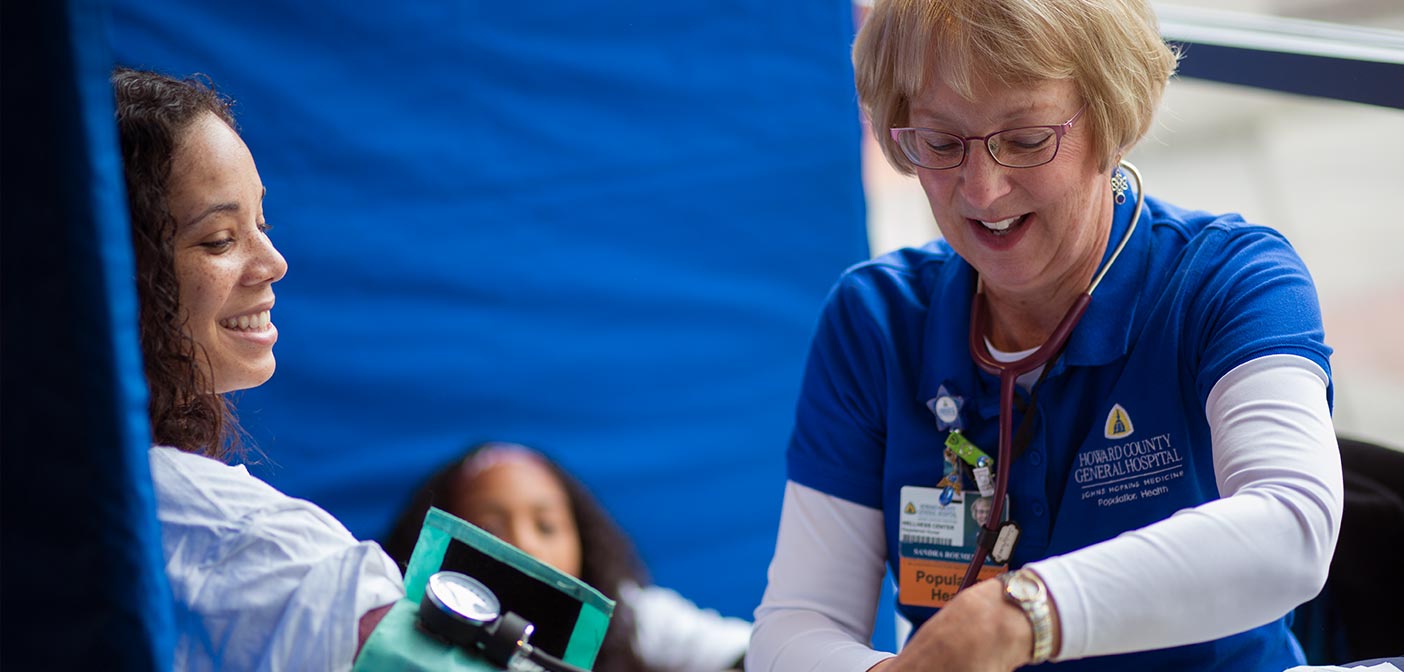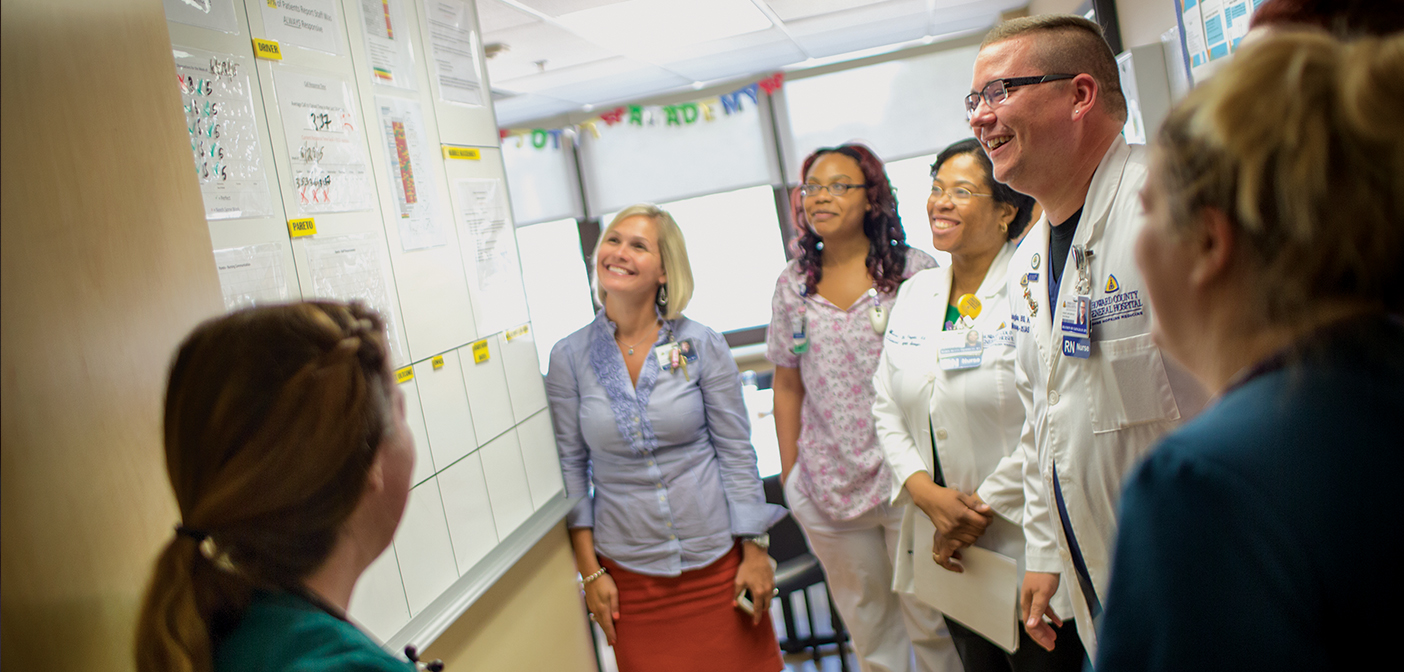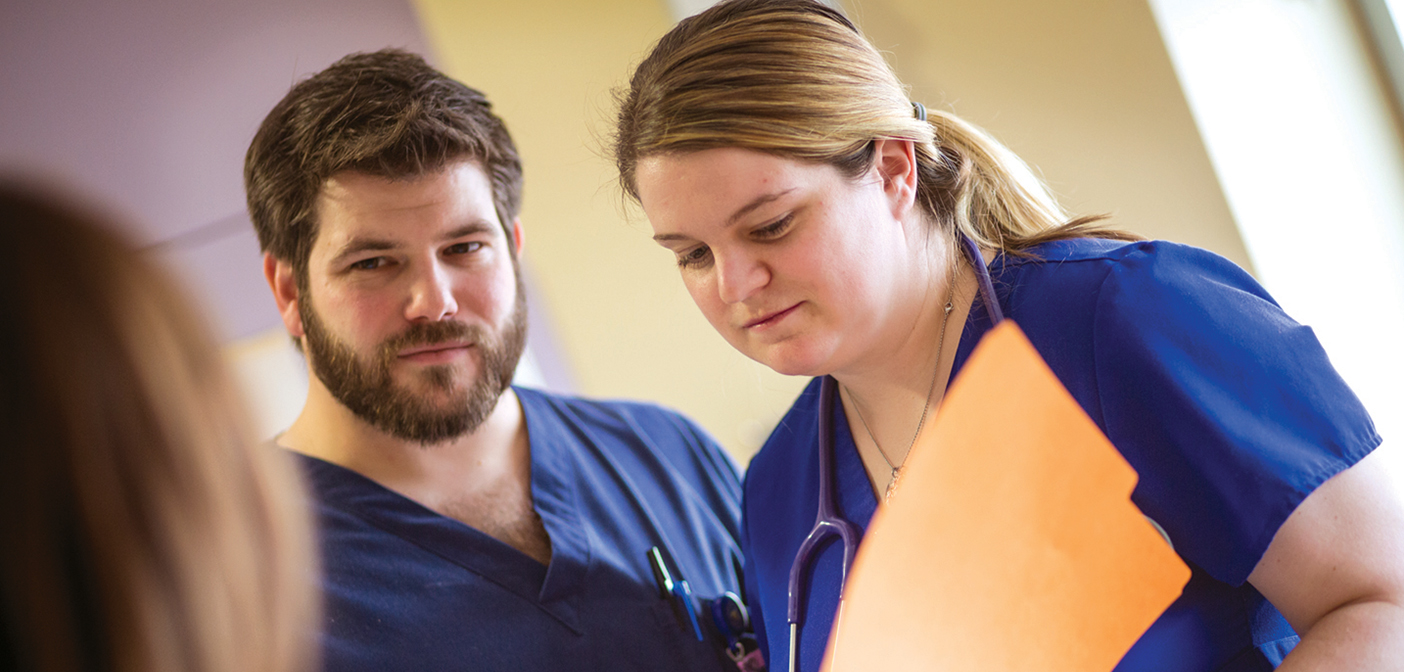By Teddi Fine
Nursing at Johns Hopkins Medicine-affiliated Howard County General Hospital (HCGH)-as at other hospitals across the country -has grown increasingly complex, and not just as the result of greater reliance on high-tech equipment and procedures.

Other factors contribute to the growing challenges faced by hospital-based nurses. People who are underinsured or uninsured often delay care as long as they can. More outpatient settings provide what used to be hospital-based services. And older adults, a growing segment of the population, often have multiple, interacting chronic health needs.
The result? Many patients arrive at the hospital sicker, requiring ever-higher levels of complex care and treatment.
Enter the new nurse, degree in hand, loaded with enthusiasm and energy but, according to Debbie Fleischmann, MPA, RN, NEA-BC, HCGH Director of Nursing Clinical Education, not entirely prepared for the realities of hospital-based practice. Serina Gbaba, MBA, BSN, RN, a new HCGH nurse, agrees. “As a new graduate, the prospect of working in acute care setting, with the acuity of patients in the IMC unit, was frightening to me. I didn’t know what to expect,” she said.
Fleischmann points out, “Historically, new nurses got a six-week orientation and were then thrown to the wolves. We’ve discovered that we need to work differently to retain nurses.”
In July 2008, HCGH implemented the RN Fellowship Program, a year-long immersion for new nurses. Designed not only to ease the transition from super-vised to independent hospital-based nursing prac-tice but also to help them adapt and grow professionally, the program has the collateral effect of both better nurse retention and better patient care.
The program, using a mentor/mentee model, is divided into three parts that grow confidence, knowledge, and independence over the year. The orientation phase hones clinical skills and promotes inclusion; the transition phase enables new nurses to work under the guidance of mentors. Finally, under the eyes of more senior mentor-nurses, the new nurse becomes a fully functioning member of the unit. Separate tracks tailor content and activities to the specialized needs of four types of units: medical surgical, intermediate care/short stay, critical care/ER/PACU, and obstetrics.
Everyone agrees the program makes good sense. “The program has been very successful,” says Vera Tolkacevic, Mentor Program Manager. “Over the years, nurses have come to us right out of school unready and worried. Many moved on or left the profession altogether. Now we prepare them clinically and let them know they are needed, wanted, and cared for as colleagues and competent nurses.”
Gbaba believes that the program “helps new nurses begin their profession with positive first experiences which are usually lasting experiences. Her mentor, Tina Martin, RN, thinks the program helps “the new grad nurse and the mentor learn from each other to improve the nursing profession and strengthen nursing relationships.”
And, it’s just good business. With the cost of replacing a nurse estimated at between $40,000-60,000, Fleischmann notes that “it’s time to stop the revolving door and to be smarter about how we’re training and retaining our staff. It not only makes good dollars and cents, it makes plain good sense.”
 When Caring Is a Team Sport
When Caring Is a Team Sport ICU’s Great Moves
ICU’s Great Moves Meet in the Middle
Meet in the Middle The Polite Pause
The Polite Pause 1-2-3, Go
1-2-3, Go







